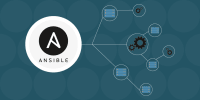Description
In this course, you will learn :
- How to set up a Docker environment, connect to cloud providers such as AWS and Azure, manage infrastructure on AWS and Azure with Ansible, and finally automate configuration and state management processes.
- Learn the fundamentals of Ansible through practical and real-world scenarios in each section.
- You will have learned a valuable new skill that will open many doors for you, such as cloud computing and DevOps.
- This will undoubtedly be a valuable asset to include on your resume and will assist you in furthering your career.
Syllabus :
1. Ansible Development with Containers
- Build and Run a Container
- Variables, Volumes, and DockerHub
2. Connect to the Cloud
- Connect to AWS
- Connect to Azure
3. Starting at the Source
- Introduction to Git
- Connect to the Repository
- Get hands on with Git Commands
4. Getting Started with Ad-Hoc Commands and Playbooks
- Introduction to Ad-Hoc Commands
- Create a Playbook
5. Deploy an Ansible Development Environment
- Deploy to AWS
- Deploy to Azure
- Connect to the Environment
6. Putting the Ansible Environment to Work
- Ad-hoc Commands against Remote Hosts
- Playbooks against Remote Hosts
- Configure an Nginx Web Server
- Configure a Windows IIS Web Server
7. Take Inventory of the Infrastructure
- Use Groups
- Organize Hosts and Group Variables
- Secure Secrets with Ansible Vault: Use Encrypted Files
- Secure Secrets with Ansible Vault: Use Encrypted Strings
8. Build Reusable Configurations
- Build a Site
- Make it Reusable with Ansible Roles
- Decoupling Ansible Roles
9. Dynamic Inventories for Scaling
- AWS - Create a Dynamic Inventory
- AWS - Use Keyed Groups
- Azure - Create a Dynamic Inventory
- Azure - Use Keyed Groups
10. Build a CI \ CD pipeline for Ansible with Github Actions
- Release Pipeline for Ansible
- Using Github Action to Lint Ansible
- Deploying the Ansible Code
- Create a Deploy Ansible Workflow
- Setting a Failure Exit Code in a Docker Container









